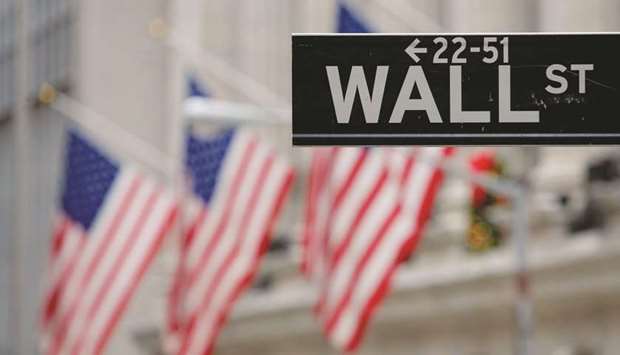It’s “gut check” time for US equity investors as the pivot from a Fed-fuelled rally back to the foggy fundamentals looms, according to Morgan Stanley.
“The moment of truth may be arriving with first-quarter earnings results,’’ Michael Wilson, the bank’s chief US equity strategist, wrote in a note yesterday. He said that this year’s stock rally can be entirely attributed to investors pushing up company valuations amid the US central bank’s dovish turn, and the profit reports could mark a turning point.
The reporting season begins in earnest with JPMorgan Chase & Co and Wells Fargo & Co on Friday.
Corporate executives might find themselves in a difficult position. While reporting an expected 4% drop in earnings per share from a year earlier, they’ll have to either convince investors that the worst performance is in the rear-view mirror or temper expectations for a second-half – and in particular, fourth-quarter – comeback. Tech is projected to be the largest drag on first-quarter results; without the sector, the shrinkage in profits is a more modest 2.8%.
It’s unclear which would be preferable to investors: higher conviction in the outlook or a lowered, but more realistic, bar for future quarters, Wilson wrote. Indeed, half of the past four reporting periods have seen investors relatively unmoved by strong showings, with concern about the potential for a deceleration in economic activity rising to the fore.
“We suspect the powerful equity rally has left many management teams in a better mood that could encourage them to remain steadfast in the second-half recovery mantra, even if the evidence of one remains uncertain,’’ he wrote. “We do wonder when, or if, investors will demand more evidence that growth is not only bottoming but accelerating.’’
Full-year earnings estimates are still too high, he reckons, and the first-quarter figures won’t be the low water mark for 2019.
Pressures on profitability – particularly from rising workers’ wages – will be in focus this quarter, as every S&P 500 sector has seen margin estimates cut for 2019.
“Last quarter, the number of mentions of labour costs during earnings calls was the highest it has been since 2005,’’ he wrote. “We will be watching this earnings season closely to see how these pressures materialise.’’

A street sign for Wall Street is seen outside the New York Stock Exchange in New York (file). Pressures on profitability u2013 particularly from rising workers’ wages u2013 will be in focus this quarter, as every S&P 500 sector has seen margin estimates cut for 2019.
